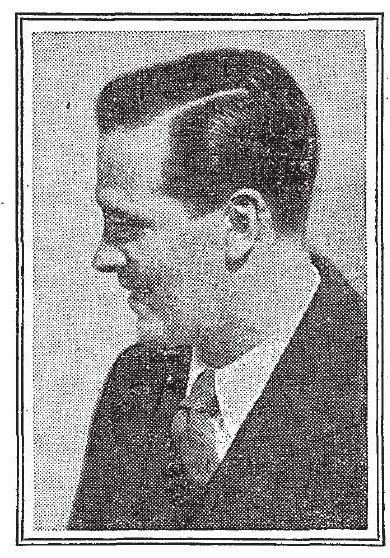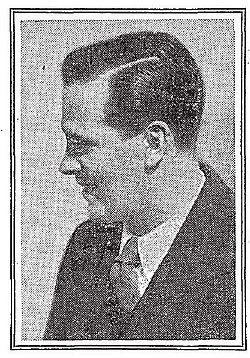Other names "Stookie" Allen Died January 6, 1971 Role Cartoonist | Name Benjamin Allen Occupation cartoonist | |
 | ||
Full Name Benjamin David Allen Born January 30, 1903 Texas, U.S. Years active Golden Age of Comic Books Spouse(s) Gladys Parker Allen(–1966, her death) | ||
Benjamin David "Stookie" Allen (30 January 1903 - 6 January 1971) was a cartoonist who created the nationally syndicated comic strip Mugsey. He worked on Flapper Fanny during the 1930s with his wife, Gladys Parker, while they lived in New York City. They moved to Los Angeles in 1937.
Contents
- World War II
- Comic strips
- Heroes of Democracy
- Men of Daring
- Women of Daring
- Illustrated Crimes
- Keen Teens
- Books
- References

Allen grew up in Corsicana, Texas, and attended the University of Texas. A local sports legend, in 1924 he caught the winning touchdown pass against Texas A&M University when a bobbled ball was tipped into his hands, leading the Longhorns to 7-0 victory against the Aggies in the brand new Memorial Stadium. In college, Allen also played baseball and the St. Louis Cardinals offered him a pitching tryout. He left Texas to study at the Art Institute of Chicago.

Allen moved around the southern oil fields for a while and ended up working for Standard Oil looking for swamp gas. When that job ended he was set to work on a pipeline in Natchez, Mississippi, and was ready to take a job in Venezuela, when he was offered a position drawing sports cartoons for the Associated Press.
In 1940, Allen invested in a mica mine 90 miles north of Santa Fe, New Mexico, with the 1920s New York band leader, Smith Ballew.
World War II
When the war started, Allen was drawing the cartoon Heroes of Democracy and his patriotic cartoon motivated his decision to join the army. During World War II, Allen served as a major in the combat engineers in Europe. He was an art engineer drawing battle bridges such as one built by the 238th Engineers, 1106th combat group, crossing the Seine River south of Paris to replace the destroyed railway bridge shown in the background He also drew floating Bailey bridges like the one erected in August 1944 also spanning the Seine.
Comic strips
In addition to Flapper Fanny, Mugsey and Heroes of Democracy, Allen created and drew Argosy magazine's Men of Daring and Women of Daring. When Allen moved to California, he drew a horse racing tip sheet comic called It's a Bet for the Los Angeles Herald-Express. He also created Keen Teens, another syndicated feature and Detective Fiction Weekly's Illustrated Crimes.
Heroes of Democracy
A syndicated feature, Heroes of Democracy, was devoted to the exploits of American heroes, such as "Wild Bill" Wellman of World War I.
Men of Daring
The action-story pulp magazine, Argosy, contained a weekly feature called Men of Daring, true stories in pictures. These one to two-page weekly picture stories contained the exploits of Americans, many relatively unknown, such as Canadian air ace Billy Bishop, infamous men like Edward Teach (aka Blackbeard), "as bold and cruel a rover as ever grasped hilt in hand". Allen often pictured celebrities such as Harry Houdini and the derring-do of international heroes like Alexander Sasha Siemel, Brazil's "Tiger Man". The art is strictly black-and-white, hand-lettered with depictions of landscapes, famous individuals, villains and mechanical inventions of the times. Men of Daring also appeared in the first two issues of the short lived pulp magazine Red Star Adventures.
Women of Daring
Argosy's weekly feature occasionally became Women of Daring, starring such notables as Dame Rachel Crowdy "the first woman in history to win knighthood in her own right" and the female bullfighter Conchita Cintron. Girls could also look up to Mary Wiggins, the Hollywood stunt girl and high diver.
Illustrated Crimes
Detective Fiction Weekly contained Illustrated Crimes by Allen, a pictographic true crime feature. They had titles like The Clue of the Folded Dollar, a detailed account of the murder of Louise Gerrish, a school teacher, or The Case of Lawyer Gibson, about a wealthy widow murdered for her estate by her attorney.
Keen Teens
After World War II, Allen felt that too much attention was being paid to juvenile delinquents and decided to focus a pictorial column on teens doing positive things. He visited J. Edgar Hoover who thought it a good idea, so Allen created the syndicated feature Keen Teens. These black-and-white cartoons often contained photographs as part of the feature, such as the camera featured in Keen Teen Lens Lad-Paul Nielsen.
Books
To promote Keen Teens, Allen wrote 101 Ways to Make Money: Keen Teens which outlined how teens have "won fame, renown, and often small fortunes" by among other things, building collapsible boats, figurines and toys. "The perfect gift for the alert teen-ager" (Emerson Books, 1955). He also wrote Bug Movies in the Funnies a collection of his strips by the same name from 1930-34 (Dell Publishing, 1929), Fighting Heroes: Battle for Freedom (Whitman Publishing, 1942) and Men of Daring (Cupples and Leon Company, 1933).
